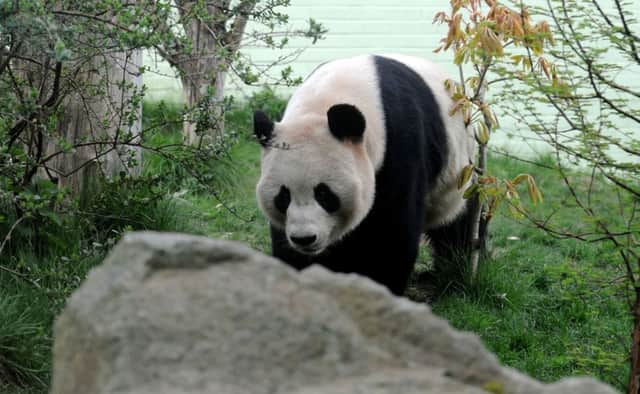Breeding Edinburgh Zoo pandas really matters


Panda mating season is over for another year at Edinburgh Zoo, and we will have to wait a few months to see whether it’s going to be third time lucky for Tian Tian or if we are once again going to be left feeling a little disappointed. Why do we care so much about producing a panda cub when the majority of people couldn’t seem to care less about the breeding arrangement for any of our other animals? More to the point, does any of it actually really matter?
The first question is easy to answer. We care because they remind us of ourselves. The way they sit up, use their thumbs, eat their food, their childlike eyes – they seem human and vulnerable and prompt a very primitive response in us to look after them. Even their lack of success in getting pregnant is something that many of us can relate to and we love them all the more for it. The love, or non-love, story between Tian Tian and Yang Guang has struck a chord with the nation as these two bears have become real personalities to many people.
Advertisement
Hide AdAdvertisement
Hide AdThe answer to the second question, though, is not as well understood. There are some who say that we are keen to see a panda cub as it will drive our visitor numbers and I wouldn’t entirely disagree. Numbers have increased in response to the arrival of giant pandas and I am delighted. It means even more people are seeing the other animals in our collection as well as the pandas, learning about us and generating more funds for our conservation work. Although a cub would mean more tickets being sold, the most important factor is that it would make a valuable contribution to the worldwide panda conservation effort, and that really does matter. It matters a great deal.
If we can successfully breed the two we have here, then we will be adding to the number of pandas in zoos around the world and in breeding centres in China, which currently totals around 350. The more there are, then the greater and more diverse is the gene pool from which pandas can be selected for re-introduction.
China needs strong pandas, disease-free and physically in top shape. They need to be able survive in the wild where the threat from predators such as the clouded leopard, competition with other pandas for food or risk of illness is ever-present. In the last two years, a male and female panda have been re-introduced into the bamboo forest reserves in Sichuan Province.
They are being closely monitored so we will know if they survive, mate and breed, either with wild pandas or each other. It’s a slow process but the experience gleaned from experts around the work in caring for pandas in captivity has shaped the form of release and hopefully over time, more will be suitable for re-introduction.
As part of the study of the research being carried out while the pandas are here, we are looking at bamboo in detail. We know that pandas need bamboo but just as importantly, bamboo needs pandas. Through our analysis of what type and part of the bamboo plant the panda eats in captivity, we can see it varies during the year and even during the day. This knowledge can then be applied to the long-term plan of re-establishing bamboo forests in China. If we can get the right mix of plants, then we are maximising survival chances not just for pandas, but for the many other rare species which rely on the bamboo forests to survive, such as the takin and red panda.
As a result of our research into panda conservation, we have been catapulted into an international arena of experts and scientists, where we are working collaboratively on aspects such as breeding, artificial insemination, nutrition and genetics. The international symposium we held last year, sponsored by JLR China, is a prime example of pandas bringing people together. The collective learning from such events should not only help with panda conservation but be applied to other species too.
So, for the future sustainability of this incredible species and possibly many others, does the breeding of pandas matter? The answer must be “Yes”.
• Chris West is CEO of the Royal Zoological Society of Scotland, www.rzss.org.uk
SEE ALSO